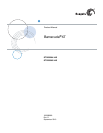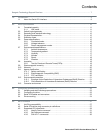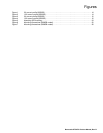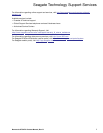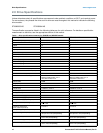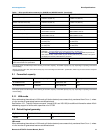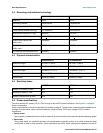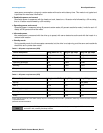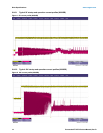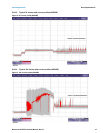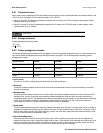
Barracuda XT SATA Product Manual, Rev. D 9
1.0 Introduction
This manual describes the functional, mechanical and interface specifications for the following Seagate
Barracuda
®
XT model drives:
These drives provide the following key features:
• The SATA 6Gb/s interface enables the use of the industry’s newest and fastest hard drive controllers while
providing backward compatibility to legacy SATA 1.5Gb/s or 3Gb/s systems.
• 7,200 RPM spindle speed.
• High instantaneous (burst) data-transfer rates (up to 600MB per second).
• Perpendicular recording technology provides the drives with increased areal density.
• State-of-the-art cache and on-the-fly error-correction algorithms.
• Native Command Queueing with command ordering to increase performance in demanding applications.
• Full-track multiple-sector transfer capability without local processor intervention.
• Compliant with RoHS requirements in China and Europe.
• SeaTools diagnostic software performs a drive self-test that eliminates unnecessary drive returns.
• Support for S.M.A.R.T. drive monitoring and reporting.
• Supports latching SATA cables and connectors.
• Worldwide Name (WWN) capability uniquely identifies the drive.
1.1 About the Serial ATA interface
The Serial ATA interface provides several advantages over the traditional (parallel) ATA interface. The primary
advantages include:
• Easy installation and configuration with true plug-and-play connectivity. It is not necessary to set any jumpers
or other configuration options.
• Thinner and more flexible cabling for improved enclosure airflow and ease of installation.
• Scalability to higher performance levels.
In addition, Serial ATA makes the transition from parallel ATA easy by providing legacy software support. Serial
ATA was designed to allow you to install a Serial ATA host adapter and Serial ATA disk drive in your current
system and expect all of your existing applications to work as normal.
The Serial ATA interface connects each disk drive in a point-to-point configuration with the Serial ATA host
adapter. There is no master/slave relationship with Serial ATA devices like there is with parallel ATA. If two drives
are attached on one Serial ATA host adapter, the host operating system views the two devices as if they were both
“masters” on two separate ports. This essentially means both drives behave as if they are Device 0 (master)
devices.
The Serial ATA host adapter and drive share the function of emulating parallel ATA device behavior to provide
backward compatibility with existing host systems and software. The Command and Control Block registers, PIO
and DMA data transfers, resets, and interrupts are all emulated.
The Serial ATA host adapter contains a set of registers that shadow the contents of the traditional device
registers, referred to as the Shadow Register Block. All Serial ATA devices behave like Device 0 devices. For
additional information about how Serial ATA emulates parallel ATA, refer to the “Serial ATA International
Organization: Serial ATA Revision 3.0”. The specification can be downloaded from www.sata-io.org.
ST33000651AS ST32000641AS
Note
The host adapter may, optionally, emulate a master/slave environment to host software where two
devices on separate Serial ATA ports are represented to host software as a Device 0 (master) and
Device 1 (slave) accessed at the same set of host bus addresses. A host adapter that emulates a
master/slave environment manages two sets of shadow registers. This is not a typical Serial ATA
environment.



